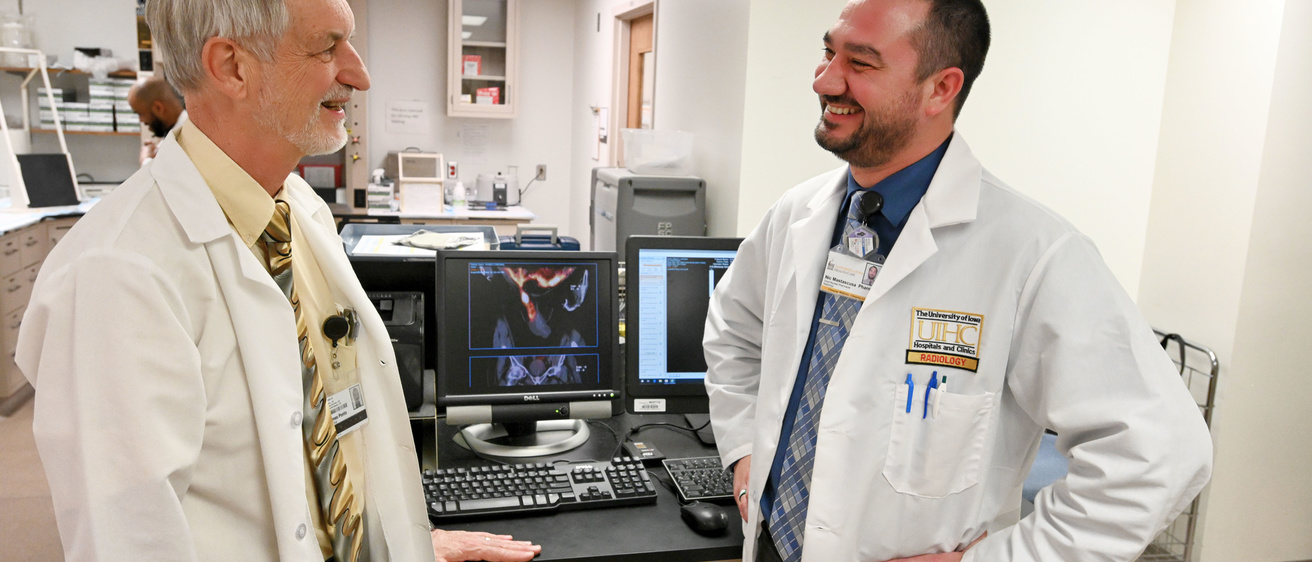Some health issues can only be found—or treated—using drugs that are radioactive. Nuclear pharmacists prepare and dispense these medications.
At the University of Iowa Hospitals and Clinics, the senior nuclear pharmacist Jim Ponto, '77 BSPh, MS; is passing the torch to the junior Nic Mastascusa, '08 PharmD.
Radioactive, or nuclear, medicines are not dye. A special camera can "see" the energy the drugs emit while moving inside a person's body, as part of procedures that diagnose, detect and/or treat issues such as heart, gallbladder, or lung disease and some cancers.
Ponto and Mastascusa each get less radiation than a flight attendant, and their patients get about the same amount as they would during an X-ray.
Both enjoy using their knowledge of basic science—of chemistry, physics, biology, and the like—every workday. Each is a pharmacist on larger healthcare teams who also teaches and conducts research.
"I get to work with subatomic physics, the chemistry of the radiopharmaceutical, the physiology and chemistry of radiation in the body and much more," said Mastascusa.
"Then there's the ability to safely manipulate and dispense something that is radioactive. Not many people get to do that every day."
Editorial notes:
- Jim Ponto retired in summer of 2020.
